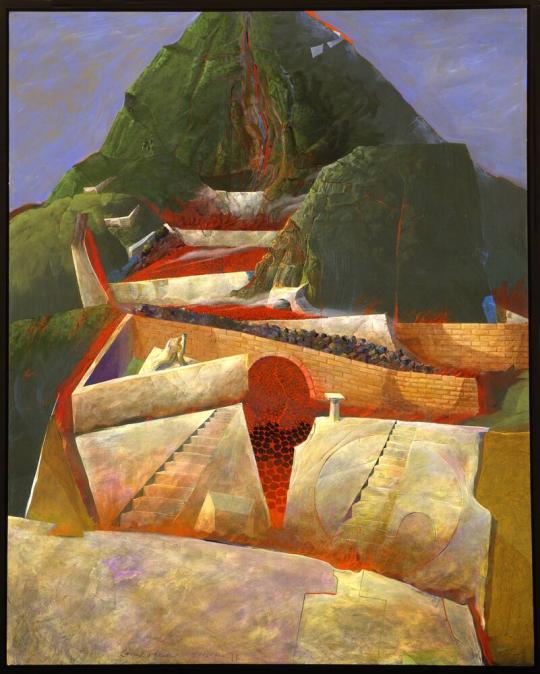(Written in October 2018)
Lucas Johnson’s painting Volcano Series No. 3 (1991) depicts a dark green mountain split open down the middle. Bright red lava flows down the split carrying black rocks and large cubic slabs which appear architectural in nature. These slabs look like sandstone and two of them are embedded with staircases.
The painting instantly captivated me. I’ve always felt entranced by lava. Its bright orange red tone is so luminescent that it serves almost as a warning sign, though any soul close enough to witness its flow has likely already asphyxiated from the fumes. Is there any force in nature more hell-bent in destruction? At its core, pyromania is nothing more than a fascination with utter destruction.
This picture is surreal because the lava is so thick with undissolved debris, unlike any photograph of lava that I’ve seen. The sandstone blocks look out of place floating in the molten torrent. They appear Egyptian in origin but the mountain is green, indicating plant life and a location away from the Egyptian desert. The painting depicts the mountain at an upward angle to the viewer in order to create a sense of gravity, yet there is no direct indication of motion within the lava. The biggest sandstone block at the very bottom of the frame may even be blocking its flow.

I think Johnson intended to create a juxtaposition of the natural world and its struggle to compete with the man-made world, classically known as the conflict of Man vs. Nature. Lava normally creates a path of utter destruction but the blocks in the painting appear whole and largely undamaged, perhaps even standing a chance of winning the fight. He does portray one side as the deserved victor. In blending the two worlds into one, Johnson is stating that their coexistence is natural.